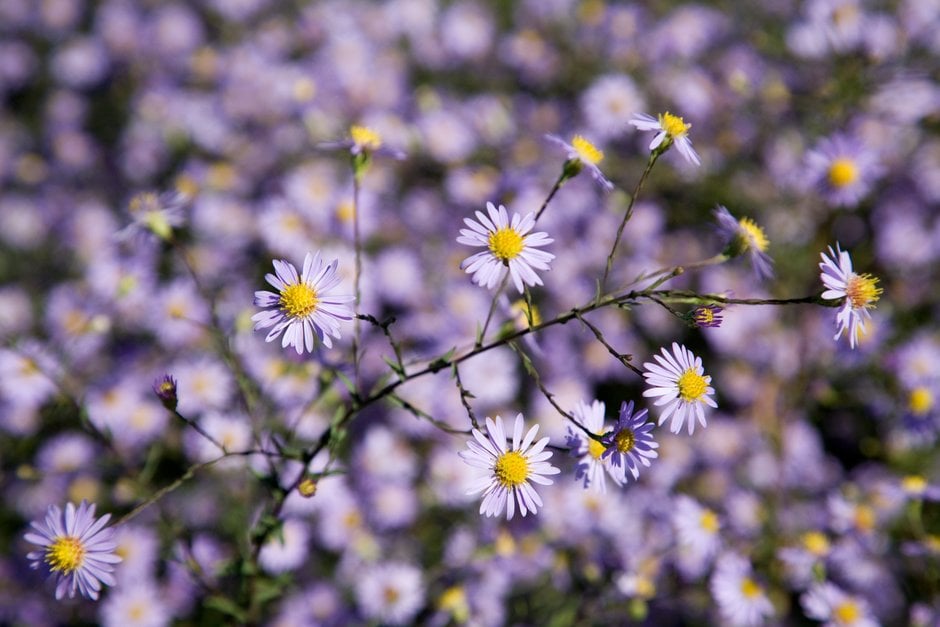Symphyotrichum turbinellum misapplied

mauve-flowered starwort (of gardens)
A clump-forming perennial, with slender, upright dark green stems to 1.2m tall bearing lance-shaped mid-green leaves to 10cm long. Airy panicles of palest violet, daisy-like flowers to 2cm across, with yellow centres, appear in early and mid autumn
Size
Ultimate height
1–1.5 metresTime to ultimate height
2–5 yearsUltimate spread
0.5–1 metresGrowing conditions
Moisture
Well–drainedpH
Acid, Alkaline, NeutralColour & scent
| Stem | Flower | Foliage | Fruit | |
| Spring | Green | |||
|---|---|---|---|---|
| Summer | Green | |||
| Autumn | Blue Orange | Green | ||
| Winter |
Position
- Full sun
Aspect
South–facing or West–facing or East–facing
Exposure
Exposed Hardiness
H7Botanical details
- Family
- Asteraceae
- Native to GB / Ireland
- No
- Foliage
- Deciduous
- Habit
- Bushy
- Genus
Symphyotrichum includes around 90 species of annuals, biennials and perennials, mostly spread through the Americas, that were formerly included within the genus Aster. Leaves are simple, lance-shaped and entire, but it is their daisy-like flowerheads that they are grown for; central disc florets are typically yellow, surrounded by strap-shaped ray florets in shades of pink, blue, purple or white
- Name status
Correct
How to grow
Cultivation
Grow in well-drained, moderately fertile soil in an open, sunny position; may need staking
Propagation
Propagate by division in spring
Suggested planting locations and garden types
- Cottage and informal garden
- Coastal
- Gravel garden
- Prairie planting
- Wildlife gardens
- Cut flowers
- Flower borders and beds
Pruning
Cut back in late autumn
Pests
Generally pest-free
Diseases
Asters may suffer Verticillium wilt, powdery mildews and grey moulds
Love gardening
Sign up to receive regular gardening tips, inspiration, offers and more
View our Privacy Policy
Get involved
The Royal Horticultural Society is the UK’s leading gardening charity. We aim to enrich everyone’s life through plants, and make the UK a greener and more beautiful place.

